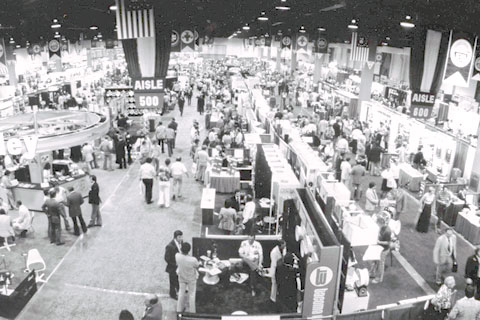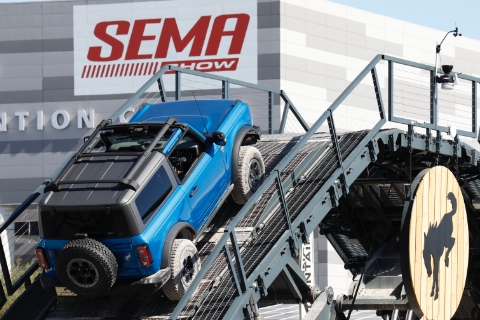SEMA News - June 2009
RESEARCH
Industry Leaders Continue to Mine the Markets
There have been eight rough patches in the marketplace since the automotive specialty-equipment industry began back in the ’30s. Each one had its impact on the marketplace, but the entrepreneurs running industry companies managed to weather them and, in some cases, found opportunities. The most recent is probably the harshest of the group, but there is no reason to think that industry leaders will not be able to find their way through it. So what made this time different? The following were a number of contributing factors.
- New-vehicle sales dropped from 16.1 million units in 2007 to 13.2 million in 2008.
- Gasoline prices peaked at more than $4 a gallon in 2008.
- The Dow Jones average dropped 33.8% in 2008.
- The U.S. housing market bubble burst in 2008.
 | ||
| The compact-performance market, which is dominated by young enthusiasts who are not so affected by the stock market or swings in the housing market, grew more than 5%. |
But the one thing that really makes the current tough economy different for our industry is the presence of mainstream consumers in the customer base. Historically, the vast majority of industry product consumers have been enthusiasts. But over the past five to 10 years, a lot of mainstream consumers have purchased industry products just because it was “cool” to modify the family SUV or pickup, and they had plenty of cash or credit to spend.
When consumer confidence began dropping, mainstream consumers did not have the motivation to continue buying industry products the way enthusiasts do. That’s why the industry is feeling the effects of the tough market this time around more than ever before. The good news is that enthusiasts are still buying industry products!
Market Size
In 2008, U.S. retail sales of specialty automotive products generated $31.85 billion. That’s a decrease of 16.4% from 2007.
As we look over the recorded history of industry numbers, we find only three periods of soft sales growth. The first was in 1991, when the industry was hit doubly hard—a soft economy combined with the first Gulf War. Consumers at home weren’t spending or were glued to CNN, and a significant portion of industry enthusiasts were otherwise occupied. The second came 10 years later in 2001, and now the third six years later, officially beginning in 2007. Of those, only 1991 and 2008 resulted in negative growth for the industry. The question we have to ask is, should we plan on an economic slowdown every five to 10 years?
 | |||
| As we look over the recorded history of industry numbers, we find only three periods of soft sales growth. |
|
||
 | |||
| In 2008, U.S. retail sales of specialty automotive products generated $31.85 billion. |
|
Market Segments
Traditionally, we group industry products into one of three market segments: specialty accessories and appearance products; racing and performance; and wheels, tires and suspension. These segments are made up of groups of products that serve similar functions and are generally added for the same purposes.
Specialty accessories and appearance products include interior trim and accessories, restyling and appearance products, specialty waxes and chemicals, graphics and decals, sunroofs and others. This segment has a broader range and larger number of products than the other two. Often, these products are the non-enthusiast’s initial contact with the specialty automotive industry. As a result, this segment was the hardest hit when the economy got tough.
Racing and performance products include internal engine parts, drivetrain, exhaust systems, fuel systems and ignition components designed to improve performance through increased durability, capability or dependability. This segment is where the industry had its beginnings.
The second wave of parts to carry the automotive specialty-equipment industry was wheels, tires and suspension products. As off-roading became more popular and as increasing numbers of consumers used custom wheels to dress up their vehicles, this segment increased in size. Wheels, tires and suspension components include specialty shocks, struts, lowering packages, lift kits, custom wheels, performance tires and performance brakes.
2008 Specialty-Equipment Market
Accessories and appearance products took a big hit in 2008 after dramatic growth over the previous 10 years. The segment lost more than 10% of its market share, while the other two segments actually grew. In large part, that is a testament to the continued buying habits of enthusiasts while mainstream consumers sat on the sidelines.
Market Niches
It has been said that the automotive specialty-equipment industry is composed of a large number of smaller niche markets, and that is very true. Each of these niches is centered around a vehicle type, how the vehicle is used or the type of components involved. In fact, industry concentration on individual market niches is probably one of the factors that has sustained and grown the industry so well over the years.
As mainstream consumers stopped spending on industry products, the light-truck products market dropped. In some cases, firms that had targeted the light-truck market diversified into trailers and trailer products. Some shifted to serving the fleet market exclusively, while others went after restoration work.
On the other hand, the compact-performance market, which is dominated by young enthusiasts who are not so affected by the stock market or swings in the housing market, grew more than 5%.
 |
 |
|
|
When consumer confidence began dropping, mainstream consumers did not have the motivation to continue buying industry products the way enthusiasts do. |
 |
|
| Accessories and appearance products took a big hit in 2008 while the other two segments actually grew. |
As new-vehicle sales dropped and franchise dealers began disappearing, the restyling niche began to decline. In some cases, firms in this niche shifted to compact performance, while others specialized in portions of the restoration market. One interesting twist in restylers’ response to the market was the shift to doing preventative maintenance for car owners and mixing in some customization along the way.
Overall, 2008 was a tough year for many in the automotive specialty-equipment industry. But not all firms experienced declines in business. In fact, a survey conducted by SEMA in April 2009 found that 37% of responding companies had higher sales in 2008 than in 2007, thus proving that the competitive entrepreneurial spirit is alive and well in the industry. The year 2008 may have been a tough year, but industry leaders found the opportunities and took advantage of them.
 Recession Definition
Recession Definition
The Business Cycle Dating Committee of the National Bureau of Economic Research met by conference call on November 28, 2008. The committee maintains a chronology of the beginning and ending dates (months and quarters) of U.S. recessions. The committee determined that a peak in economic activity occurred in the U.S. economy in December 2007. The peak marks the end of the expansion that began in November 2001 and the beginning of a recession. The expansion lasted 73 months; the previous expansion of the ’90s lasted 120 months.
A recession is a significant decline in economic activity spread across the economy, lasting more than a few months, normally visible in production, employment, real income and other indicators. A recession begins when the economy reaches a peak of activity and ends when the economy reaches its trough. Between trough and peak, the economy is in an expansion.



